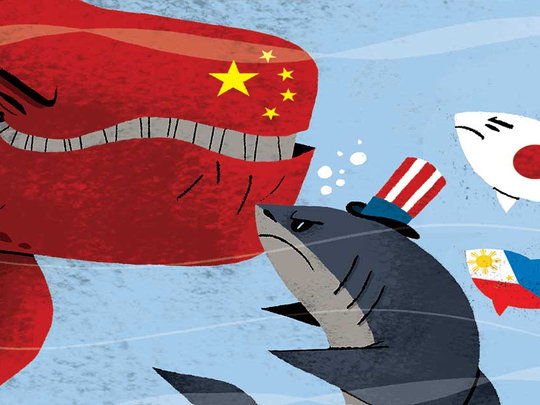
The challenge mounted last week by the United States navy to China’s maritime expansion in the South China Sea highlights the confrontation in east Asia between the world’s two major powers in one of the more important, but least noticed, global flashpoints. Neither side wants an outright conflict. But neither will give way. With an ongoing tussle between China and Japan to the north and the conundrum of North Korea, this points to continuing tension in a region which is vital for global economic growth.
When they met for a summit in California in 2013, Chinese President Xi Jinping told his American counterpart Barack Obama that the Pacific was big enough to accommodate both China and the US. True enough, but what the Chinese leader meant was that the US should move to a sphere of influence on the other side of the ocean from the eastern shores of the People’s Republic.
Instead, an American fleet much more powerful than any armed force China can deploy is based in Okinawa in Japan while an “island chain” linked to Washington runs from there down through Taiwan to the Philippines, which is a US treaty ally. Off to the north-west, South Korea is another ally, with 28,000 American troops stationed on its territory.
Forty years after the end of their war, relations between Vietnam and the US have warmed and Hanoi has been alarmed by China’s claims in waters it regards as its own. Other countries in south-east Asia welcome the strategic umbrella of American military power, even as they seek to boost economic relations with China.
In those circumstances, it is hardly surprising that the People’s Republic feels hemmed in and is putting the development of its navy at the core of its military build-up. Strategic planners in Beijing talk of Cold War-style containment. Building on reefs that it says are sovereign territory on the basis of a map drawn up in 1947 , China has steadily pushed its claims to most of the South China Sea, which is a vital trade route as well as a rich fishing ground and, perhaps, home to important energy reserves.
Military potential
The Chinese say these new “sandcastles” are there to provide safe landings for fishing vessels that get into trouble, but they have obvious military potential. During the years of its explosive economic growth, China was happy to see America playing the regional security role. That poses a challenge to other states with claims to the same area, notably Vietnam and the Philippines. But it also impinges on freedom of navigation, since China insists that its writ runs round the islands it has created.
The US says its decision to send a destroyer close to one of these islands this week, through waters over which China claims sovereignty, was to assert freedom of international passage.
The move was carefully planned, and the measured response from Beijing shows that neither side wants an escalating crisis, but this cannot hide a deeper conflict. On the one hand, Beijing is likely to continue to project itself in the region; on the other, Washington wants to perpetuate its post-1945 role as the main strategic power in east Asia — an area that lacks an overarching security system that could resolve such differences.
While America played the regional security role, Beijing concentrated on building up its exports and followed the advice of the paramount leader Deng Xiaoping, to “hide its strength and bide its time”.
Now, the Chinese president thinks the time has come. As the most powerful hands-on leader since Mao Zedong, he is fashioning a new foreign policy that seeks to project China’s power and presence, first of all in the region, but also globally, as evident from his recent visit to Britain.
That worries Washington, where the State, Defence and Commerce Departments have been pressing for some time for stiffer action against China. The White House held them back as Obama sought to manage the relationship. But now he has decided to allow some riposte. Sending in the destroyer was a small act, but has much wider significance and points to a continuing confrontation between the American desire to maintain the status quo and China’s efforts to expand its influence. — Guardian News & Media Ltd
Jonathan Fenby is a British writer, journalist and analyst. He is currently managing director of the China team of Trusted Sources research service where he also blogs. He is the author of several books, the most recent Tiger Head, Snake Tails: China Today (2012)











